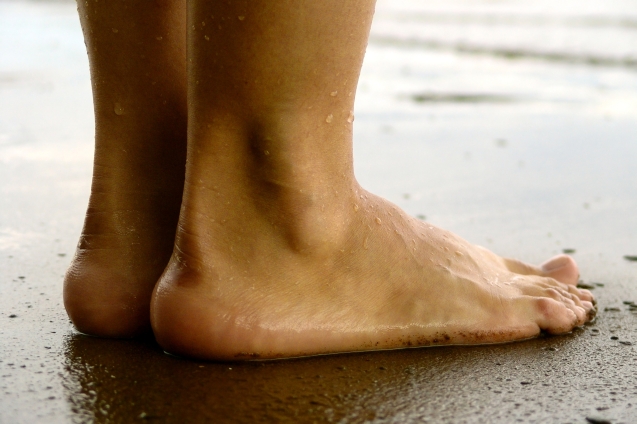The ankle was used as an example in our previous blog for how swelling can affect a joint. So now, I’m going to back track a bit and go  into an overview of the ankle joint, covering its unique features as well as it challenges and strengths. As I mentioned in that previous piece, one unique feature of the ankle is that it’s one of the only joints in our body that can perform at a high level even when injured, swollen or immobile. (The fingers and thumb share this trait although the ankle’s ability to function in the midst of adversary surpasses the others.) Even if it’s functioning at only 60-70% of its capacity, somebody can walk on the ankle for a couple of hours with little discomfort. The knee would never handle that. The hip would be quite painful. And the neck would be a mess.
into an overview of the ankle joint, covering its unique features as well as it challenges and strengths. As I mentioned in that previous piece, one unique feature of the ankle is that it’s one of the only joints in our body that can perform at a high level even when injured, swollen or immobile. (The fingers and thumb share this trait although the ankle’s ability to function in the midst of adversary surpasses the others.) Even if it’s functioning at only 60-70% of its capacity, somebody can walk on the ankle for a couple of hours with little discomfort. The knee would never handle that. The hip would be quite painful. And the neck would be a mess.
While the ankle’s ability to keep going strong despite an injury can be seen as a big advantage, it also speaks to one of it’s weaknesses. The fact that we can utilize it without taking care of it presents a real vulnerability of the ankle joint. In this light, an ankle can slide invisibly from good to not-so-good to really problematic. In other words, we often don’t realize our ankle needs some attention until it is a serious condition. Prevention is the key. Early detection and treatment are helpful as well.
 From a movement point of view, what stands out for me is that when we utilize our full range of motion in the ankle joint, that in itself creates a healthy ankle. Especially when we walk. So the beauty is, that the best way to take care of an ankle is to walk on it. That’s the key for the ankles. They want to be mobilized throughout the range of motion, even when they’ve been hurt.
From a movement point of view, what stands out for me is that when we utilize our full range of motion in the ankle joint, that in itself creates a healthy ankle. Especially when we walk. So the beauty is, that the best way to take care of an ankle is to walk on it. That’s the key for the ankles. They want to be mobilized throughout the range of motion, even when they’ve been hurt.
What happens in the modern day is that everyone’s calves start to get tight. People sit a lot and walk less, so there’ s less circulation down in the legs, and the muscles tend to tighten. Then, every year, a few degrees of movement are lost in the ankle joints, specifically, the movement in which the top of the shin moves closer to the foot. This loss of ankle mobility is evident in the shuffling gait that is often developed in the later years.
Sure, people do various ankle stretches and rotations, but it’s hard to replace the force that’s there when you’re walking on it. The average adult weighs more than 120 pounds and that’s a lot of force. The ankle loves that force. Even when it’s hurting.
Check out this short video for a demonstration on the ankle’s range of motion and how to correctly challenge the ankle joint while walking:
All in all, as far as treatment of the ankle goes, the best practice is to keep walking. However, if you are experiencing pain and immobility that doesn’t respond to this practice, please contact us. At Dorfman Kinesiology we are able to make short work of ankle issues, so you won’t be off your feet for long. Keep walking, mobilize your full range of motion and your ankles will feel better forever.
